I’ve just got back from a two-week holiday with my 11 year old daughter where our Tern GSD (and her 24″ bike) were our primary means of transport. We travelled by bike to the ferry port (in North Shields, in the north east of England) and cycled off the ferry at the other end, the port of IJmuiden, just west of Amsterdam. We cycled around 150 miles on the GSD and other bikes, travelled about 60 miles by train (with the bikes), and sailed about 300 miles each way on the ferry. We didn’t travel a single mile by car or by plane.
I’m sure there’s a carbon footprint calculator somewhere that tells us how much we saved, but even without an estimate, we can be pretty sure this was a greener holiday than most.
We weren’t “touring” in the Netherlands – we were using our bikes to get around, in a way we might have used a car, if we’d taken one. So we cycled between our four different locations (the resort Duinrell near Wassenaar for 3 nights, a cabin in Hazerswoude-Dorp for 4 nights, Utrecht for 7 nights, and Haarlem for 1 night before the ferry home) and we cycled (or occasionally walked) for all our everyday trips (to the supermarket, to the local pool, to cafes and restaurants, for outings and trips, or just to have a look around).
So, many might have travelled hundreds more miles than we did, and what we did certainly wasn’t new or innovative, but it was a first for us.
We had two bikes with us most of the time – our Tern GSD and my daughter’s 24″ Ridgeback Destiny. The GSD carried me and our luggage, and occasionally also my daughter and her bike, bagged-and-dragged with a Bakkie Bag, on longer distances. I have two 400Wh batteries on the GSD. At the cabin, we had access to a range of ‘Dutch’ bikes which we used when we didn’t need the GSD and in Utrecht, we parked the GSD in a secure municipal bike garage for a week and I rode a friend’s Gazelle while my daughter rode her Ridgeback.
At full-load (luggage, daughter, bagged-and-dragged bike) the GSD was heavy; our first attempt at packing, while within the bike’s weight limits, felt twitchy and unsafe, especially at the front/with the Transporteur rack, so we repacked, jettisoned some superfluous clothes and books, and tried again. I rode with all this for 35 miles south from IJmuiden to Wassenaar through undulating dunes and in the 26 degree heat, and it was heavy and slow at times, but absolutely fine. I barely noticed the bike at the back, apart from on tight turns and narrower points where I had to pay a bit more attention.
Conveniently, we live just a mile or so from DFDS’ so-called Newcastle-Amsterdam ferry; I say ‘so-called’ as the ports are actually in North Shields and IJmuiden. Living in North Shields, this is important to me, and I like to imagine there’s someone like me in IJmuiden equally adamant their port is not in Amsterdam. Anyway, we’re about a mile away but I predicted, correctly, that this would be the worst cycle mile of our holiday. There’s a signed cycle route for part of the journey, but even that runs along a rutted, at times narrow, shared pavement. And we have to get to that by taking our chances through North Shields town centre where there isn’t (yet) any decent cycling infrastructure. Oh, and as we approached the port, we had to detour round barriers on “national cycle network” route 10 (NCN10) as the GSD wouldn’t fit through them.
We got to the port slightly later than planned as a result of our repacking, and were promptly told we had to wait in the queue with all the cars as cycles are “treated like vehicles”. There were a few other cyclists queuing too and the port worker didn’t seem concerned that we might be a bit vulnerable amongst all the motor vehicles and their exhausts.
When we finally embarked, we were directed to the cycle parking spot in the middle of car deck, which by this point was entirely inaccessible to anything other than a small, unloaded bike. Given most travelling with cycles will have luggage – and increasing numbers will be on cargo bikes and trikes – this seemed unhelpful. So we parked the bikes up with the motorbikes, secured them with straps, and unloaded what we needed for the crossing. I wondered how much I could leave in the panniers, and what to do about the batteries – in the end, I left unimportant stuff with little value but took the batteries.
At IJmuiden, we had to wait to disembark till a good number of cars were already on the move and felt a bit overwhelmed by the noise, fumes and movement of the cars and motorbikes around us. When we did get off, a very friendly Dutch port worker directed us ahead, to queue-jump a lot of cars, to get to passport control. And we were really grateful for that.
So, all in all, the embarking and disembarking on the outward ferry leg wasn’t great – we were kind of left to fend for ourselves and shown little consideration for being more vulnerable than those travelling on motor vehicles. It didn’t make for a great start to the holiday, even though the crossing itself was just fine. Talking about this with a friend who’d been delayed more than six hours for the Channel Tunnel reminded me, however, that our ‘bad start’ was nothing compared to what many endured at airports and channel ports this summer!
On the way home, from IJmuiden, our experience of embarking and disembarking was much much better. We arrived earlier at the port, and embarked quite quickly, before any cars or motorbikes. We had easy access to the bike parking mid-deck and a lot more support securing our bikes. I was a bit more relaxed about our stuff, and left more of our luggage and the batteries on the bikes. On arrival in North Shields, we were able to disembark early too, behind a big group of touring German bikers, and were directed safely to the front of the passport control queue and along a small, marked cycle path to the dedicated cycle exit on Coble Dene. I don’t know what any of this means in terms of tips to make the journey more pleasant, but I suspect arriving earlier at the dock helps.
I’d broadly planned our routes in advance based on the national knooppunten/ fietsknoopen system. This is a network of routes throughout the Netherlands that allows you to plan journeys through numbered junctions, so that all you need to remember, or note down, is the series of numbers you should travel through (see here for a bit more about this network in English). There are a number of websites and apps that allow you to plan, save and record routes, and I found Routiq the most user friendly. Using Routiq, I could see how long journeys would take, what the terrain would be like, and where we’d pass through; their mapping also includes places to stop – to eat and drink or to visit.
I used Routiq on my phone attached to my handlebars, but resorted to writing the numbers of my daughter’s hand when my phone battery died – being a geographer, I was a little anxious that I didn’t have a map in front of me, but the knooppunten signs were regular and helpful, and we found our way just as easily. It’s an amazing and straightforward system (and replicated in the nation’s canal network too!) and makes getting round the Netherlands by bike extremely easy.
The fietsknoop network was less helpful cycling within and around towns and cities, so here I reverted to using Google Maps and/or helpful directions from friends.
Of course, one of the reasons why the network is so easy to use is because there are cycle paths, cycle-friendly junctions, and low-car streets everywhere. Even if we made mistakes and took a wrong turning, it was easy to turn round and find the right route. And on a few occasions where we ended up on the wrong streets, it was also easy to find an alternative, safe, accessible route back to the path we should have been on. At no point did we find ourselves thrown onto a busy, dangerous road as we often are when we veer off UK cycle paths (although there were a couple of times when we found ourselves on shared roads in towns which were a little bit busier than I’d have liked – I’d have been absolutely fine on my own – but with a heavy, lengthy and precious load, I was a little anxious). I intend to write up my reflections on Dutch cycling infrastructure in a separate blog post soon and will add a link here (this second blog is now published here).
On longer journeys, we stopped regularly for ice creams, drinks, or meals, or just to pause and look at the landscapes. We travelled through some beautiful neighbourhoods and rural areas that satisfied the geographer in me. I loved being able to pass through ordinary residential streets, past playgrounds, along canals, through fields, along seafronts, across nature reserves, and along high streets to get a varied sense of the places we were moving through. My daughter was perhaps less enthused by all of this, but humoured me and was more than entertained by ice creams and pancakes, and the cycling was so safe that we could pass the time telling stories or playing games and not be worried about being distracted and at risk.
The middle of our trip coincided with another European heatwave and temperatures of around 35 degrees – a powerful reminder of why car-lite lives are important. We enjoyed the breeze on the GSD as we rode to the local outdoor pool a few times, but the thought of cycling 30 miles (about 3 hours at our heavily-laden pace) in this heat was not appealing. So I started researching the possibility of taking the bikes, GSD and Ridgeback, on the train for a short hop that would reduce our cycling time to about 25 minutes. I asked on Twitter and got some useful advice and encouragement, not least from Nederlandse Spoorwegen (NS) who seemed to conclude that it was certainly possible.
So, using the Nederlandse Spoorwegen app, we booked tickets – for me, my daughter, and two bikes (a total of €26) – and took a lovely short route from our cabin to the station at Alphen an der Rijn, just a 20-minute train ride from Utrecht, our next stop. On the Twitter thread, someone suggested that we might encounter broken lifts in the heatwave, and – lo and behold – when we arrived at the station, the lift to the platform we needed was out of order. There were no station staff to help, but a keen and kind woman from the bus company shouted across the platform to two teenage boys, more or less ordering them to help me carry the GSD up the stairs – so they did – and we caught our train easily.
A few people had suggested that access to slower Sprinter trains was easier than to Intercity trains, as the doors are more level. The train we caught here was an Intercity using Sprinter stock so we were lucky – and, although a good few other cyclists had made a similar choice that day, there was plenty of room in the cycle carriage for at least six bikes. There was another family with a long tail cargo bike too – a Benno Boost laden with three kids and a lot of camping gear. And our exit – with a working lift – was smooth and step-free at Utrecht, where we just had a 10-minute bike ride to our next place to stay.
Once we’d worked out how the trains worked with the GSD, we opted to reduce another longer journey too, from Utrecht to Haarlem, on our way home to IJmuiden and the ferry. I’d estimated that this would be a 35-mile journey, through small towns and rural areas south of Amsterdam. The weather had cooled a bit so it would have been OK to cycle but I just decided a shorter journey would be a better use of our time. So we caught a train from Utrecht to Hoofddorp and then cycled just 8 miles to Haarlem, along some fabulous straight, flat paths past grazing sheep.
Coming from the UK, the ease with which we could take the train, and take the bikes too, was surprising and impressive. No need to book trains in advance, tickets valid on all trains on the day, and pretty reasonably priced too. My daughter’s tickets cost just €2.50 for each journey. We did have to pay €7.50 for each bike for each journey, but there was no question that there would be space for the bikes, unlike in the UK.
All in all, using the trains with our bikes definitely eased some pressures and now we’ve done it and know how it all works, I’d certainly integrate some train journeys into future cycling holidays, allowing us to travel further across the Netherlands. I have no doubt that taking the train with ‘ordinary’ bikes would be even simpler, mostly as getting on and off trains would be easier, but it was easy enough with the GSD.
Trying to think what else to cover –
Secure storage – we were able to keep the GSD inside in all but one of the places we stayed (though I needed some help from a random campsite neighbour to get the bike up four big steps to our lodge at Duinrell). In Haarlem, we stayed with a Vrienden op der Fiets host, where somewhere to securely store and charge your bike is assured. I’d really recommend you check Vrienden op der Fiets out, which offers accommodation to visitors arriving by bike or on foot across the country. In Utrecht, the house we were staying in was too small for the GSD, so we took it to one of the secure bike stores near Utrecht Central, home to the biggest cycle parking garage in the world. We didn’t use this one, but a smaller one with more space for cargo bikes, at Van Sijpesteijnkade. There is a question about how non-Dutch visitors pay for these facilities, as they don’t accept ‘credit cards’ and my UK Visa debit card registered as a credit card on their payment machines – and they don’t accept cash either. In any case, it cost just €8 for a week.
My daughter rode her bike for increasing distances, as the holiday progressed and as she gained confidence. She can cycle well but doesn’t cycle regularly at home and is certainly not used to long distances. She loved trying out the low-step, coaster-brake, no-gear Dutch bikes at the cabin we stayed at, getting used to a slightly different kind of cycling on the flat, quiet polder lanes. And she really enjoyed cycling round Utrecht, not least because she realised it was so much quicker than walking. She got very used to some regular routes, the junctions, the lights and so on, and said that her favourite moment on the whole trip was turning right out of the end of the road we were staying on in Utrecht on her bike! Cycling in Utrecht is busy and maintaining a constant awareness of other cyclists, and even more of people on mopeds, criss-crossing our path and overtaking, was tough for her, and at times for me. In more suburban and rural areas, where the cycle paths were a bit quieter, she cycled whole stretches of our latter journeys, only around 7-10 miles each, but longer than she’s used to cycling. And, perhaps most important of all from my perspective, she really ‘got’ cycling while we were away, so much so that we’ve bought her a new Dutch-style (but with gears and handbrakes!) bike ready for her move to secondary school in a couple of weeks.
Whilst we’d obviously been excited about the trip, I’d had a few anxieties about what would happen if the bike broke, or we got lost, or my daughter couldn’t stand the cycling, or one of us got covid – it’s quite a lot as a single parent to take responsibility for a trip like this with an 11-year old. And my daughter thought the holiday would peak at Duinrell! But, to be honest, it couldn’t have gone better. We had no major mishaps and we negotiated all the minor changes of plan easily. And we had an awful lot of fun.
As I said at the start, this wasn’t a cycle touring holiday, it was a holiday in the Netherlands by bike. So a lot of the fun we had – at Duinrell, in a rowing boat on the polders, exploring Utrecht by kayak – we might have had anyway, travelling by plane, car, or public transport. But the bikes added to it – made the travelling, on longer and shorter distances, more fun and more interesting, with lots to experience and see. We’ll definitely be doing it again.
I might tinker with this blog as more things come to mind, and I’m happy to answer questions too.
Other things that have come to mind –
As I was a little anxious about unforeseen mishaps, I did try to put in place safety nets. Of course, we had travel insurance, and after debates on the Family Cycling Facebook group over which insurers allowed for cycle touring/transport and didn’t insist in helmet-wearing, I went with LV=. I also double-checked that my GSD was covered for theft in Europe – it’s insured, named, on my home insurance with Admiral and they confirmed in writing that it was also covered beyond the UK. And finally, I have ETA Cycle Rescue – I’ve never used it but it only costs about £20 a year – and amazingly also covers breakdowns in Europe (for up to 90 days/year). I got written confirmation from them too, and made sure I had all the documents/contact details with me. And, of course, I didn’t need any of it!
I didn’t see a single other GSD on our trip. I think I possibly saw a Quickhaul at a distance in Amsterdam. I saw a few Radwagon-style longtails in Amsterdam and Utrecht but these were mostly carrying cargo rather than children. Of course, we did see thousands of bakfietsen, especially Urban Arrows, which definitely seemed to be the family cargo bike of choice.

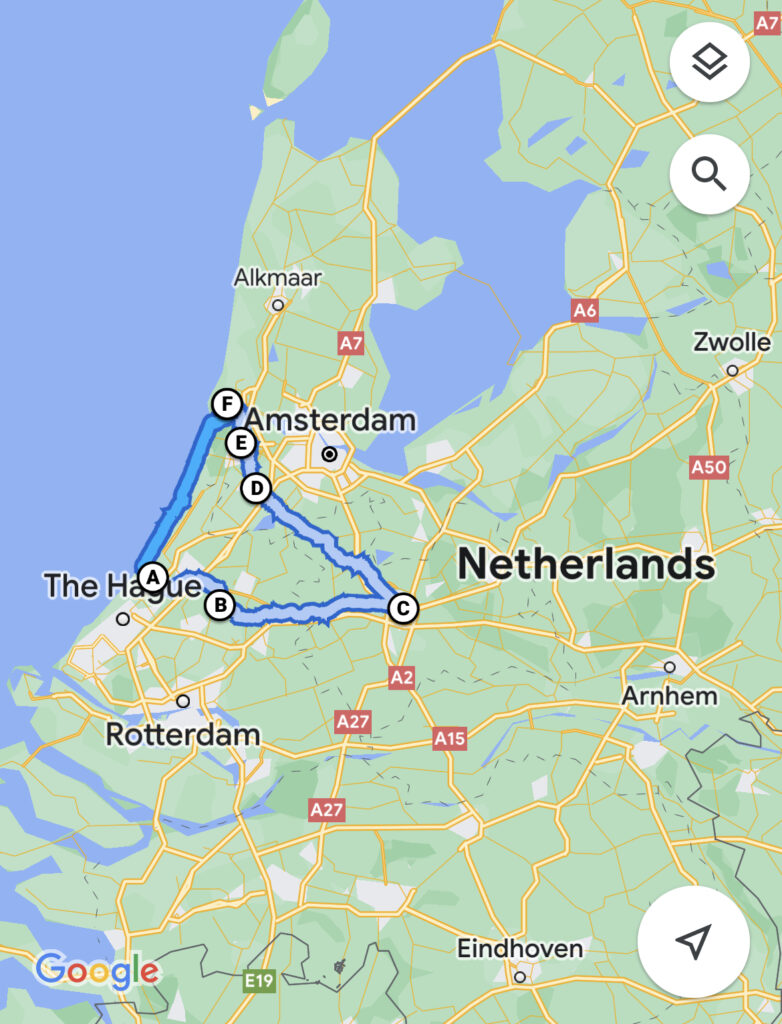
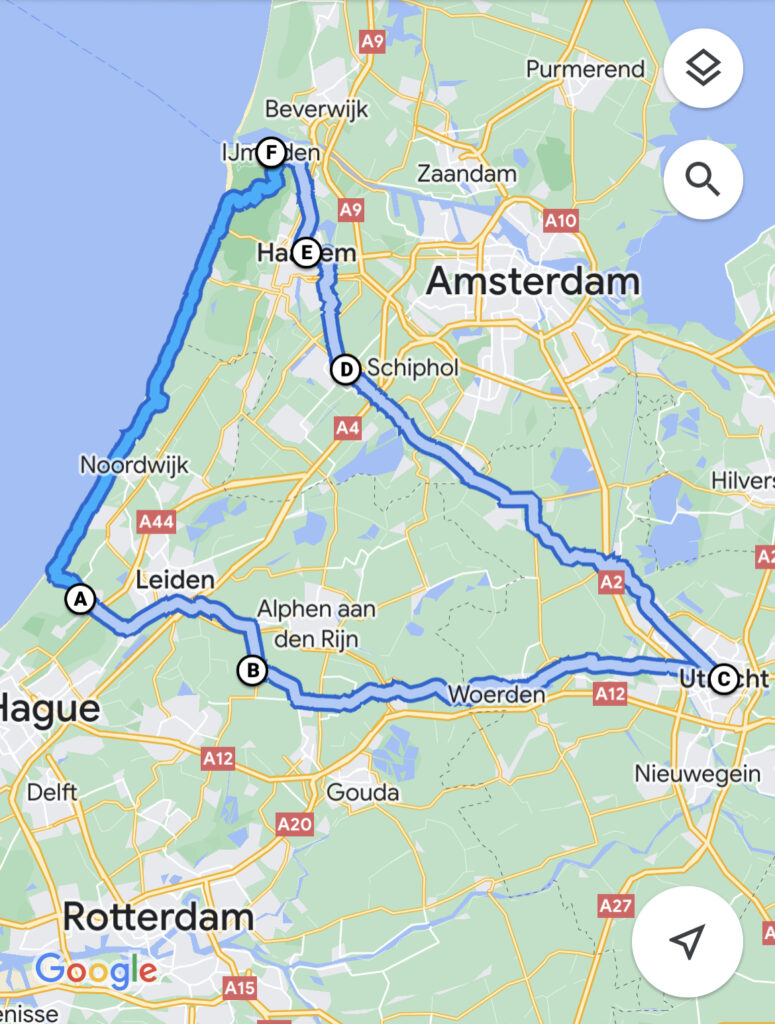
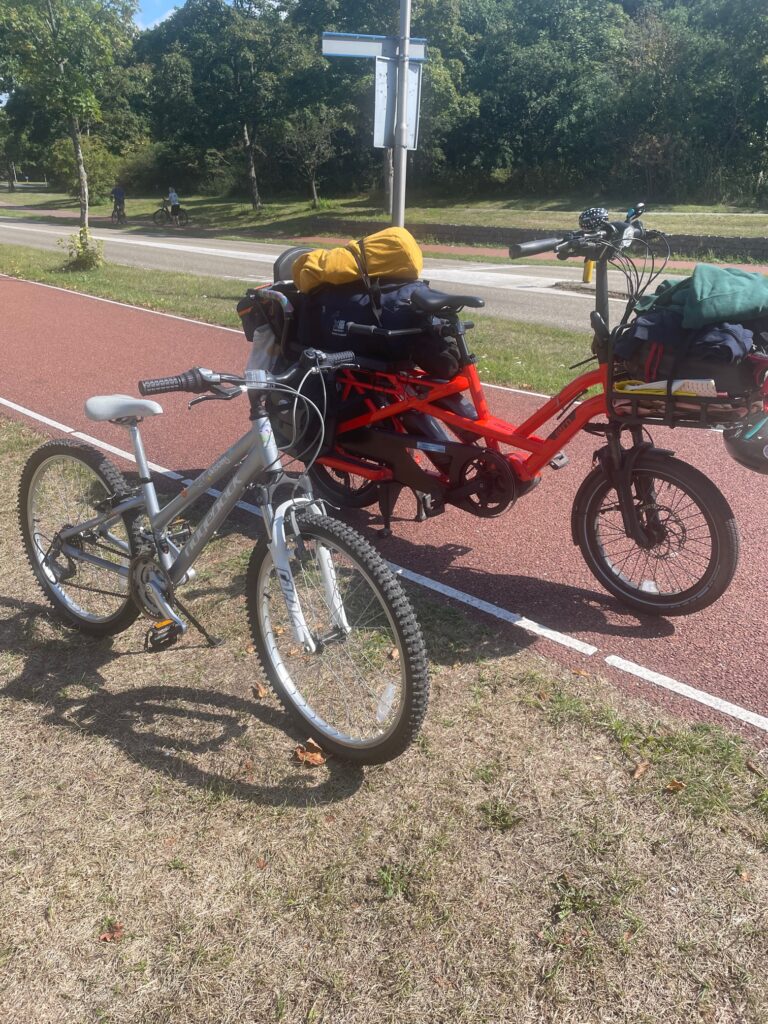
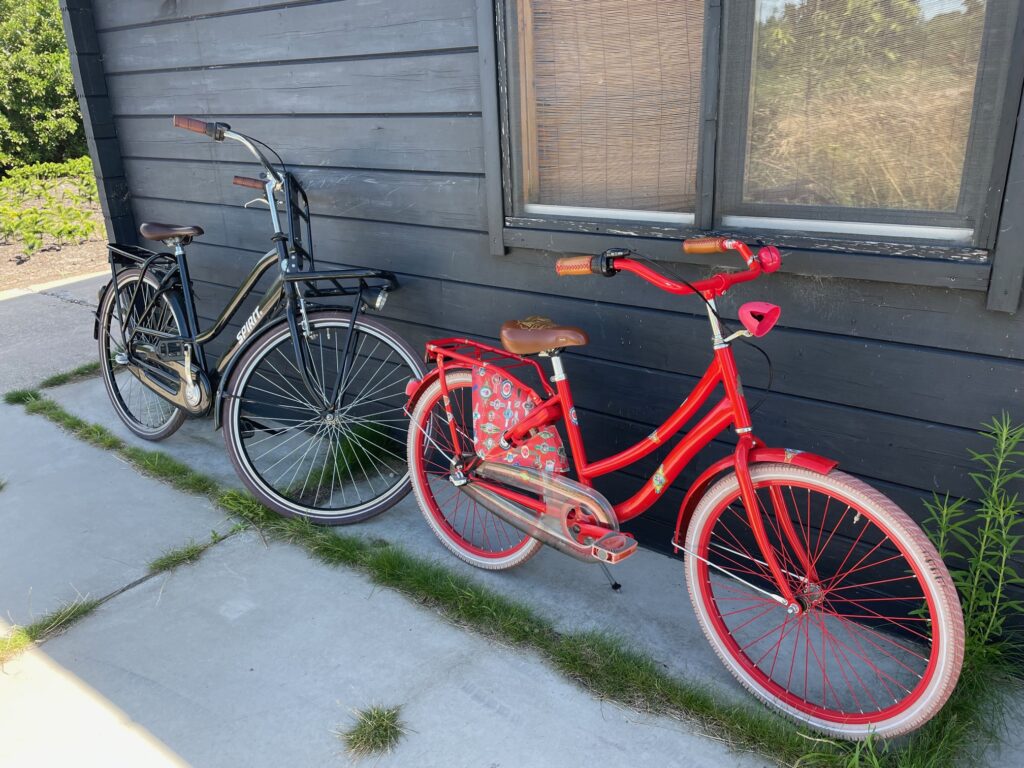
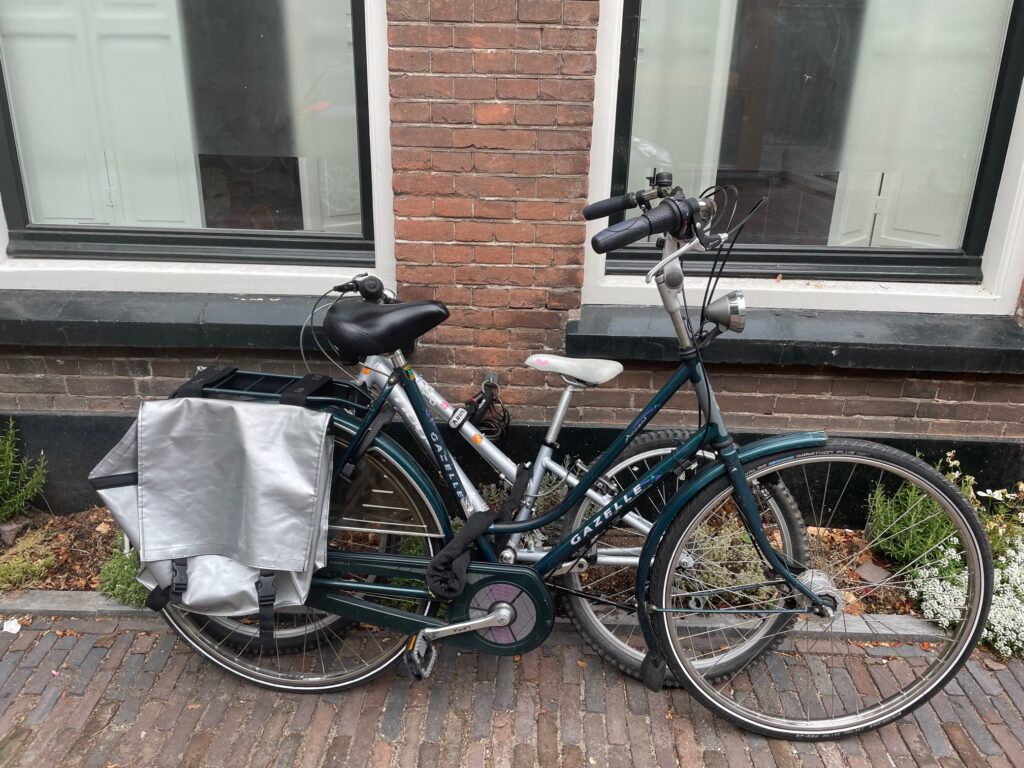
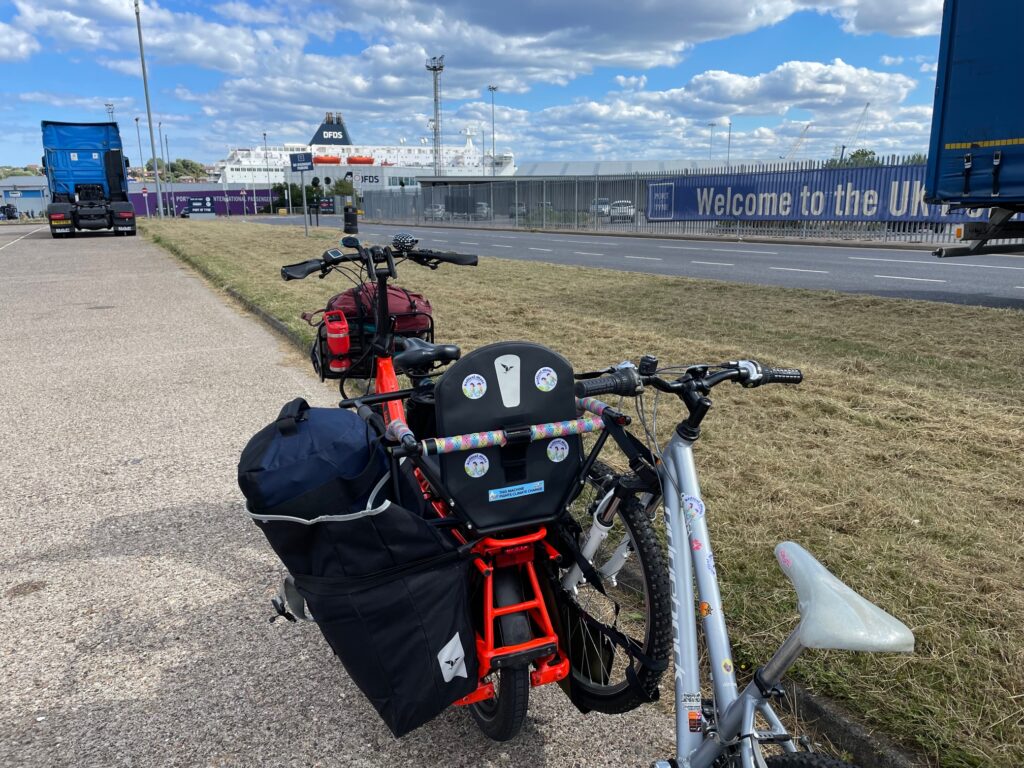

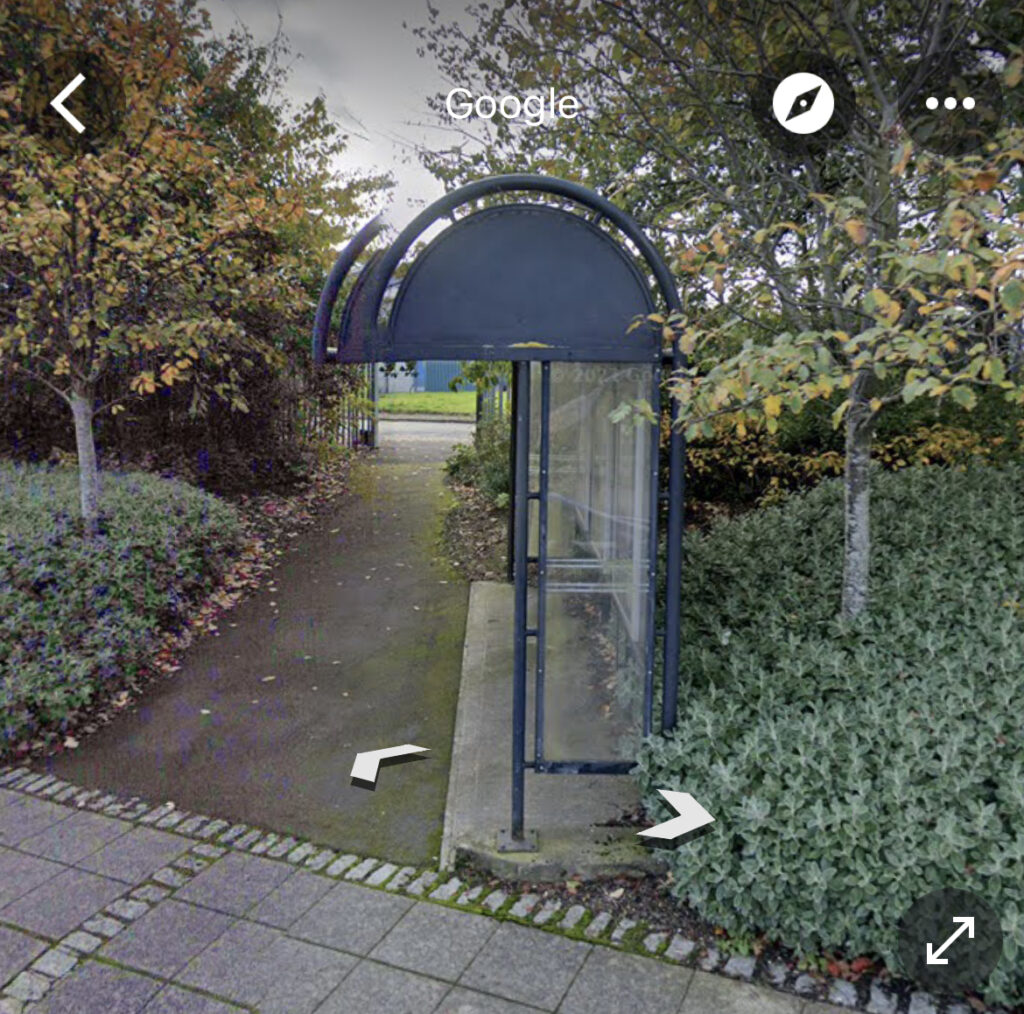
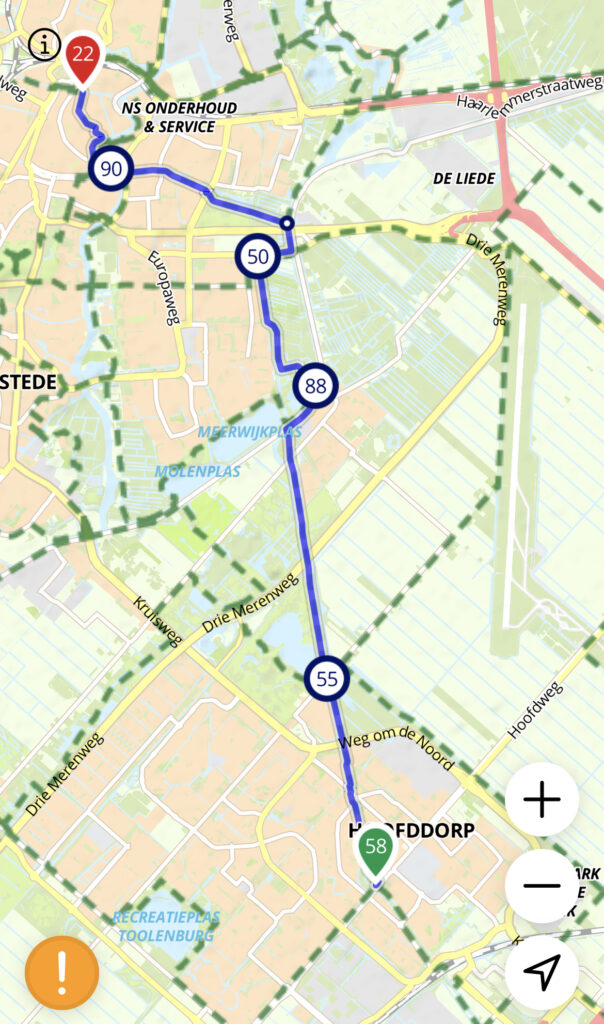
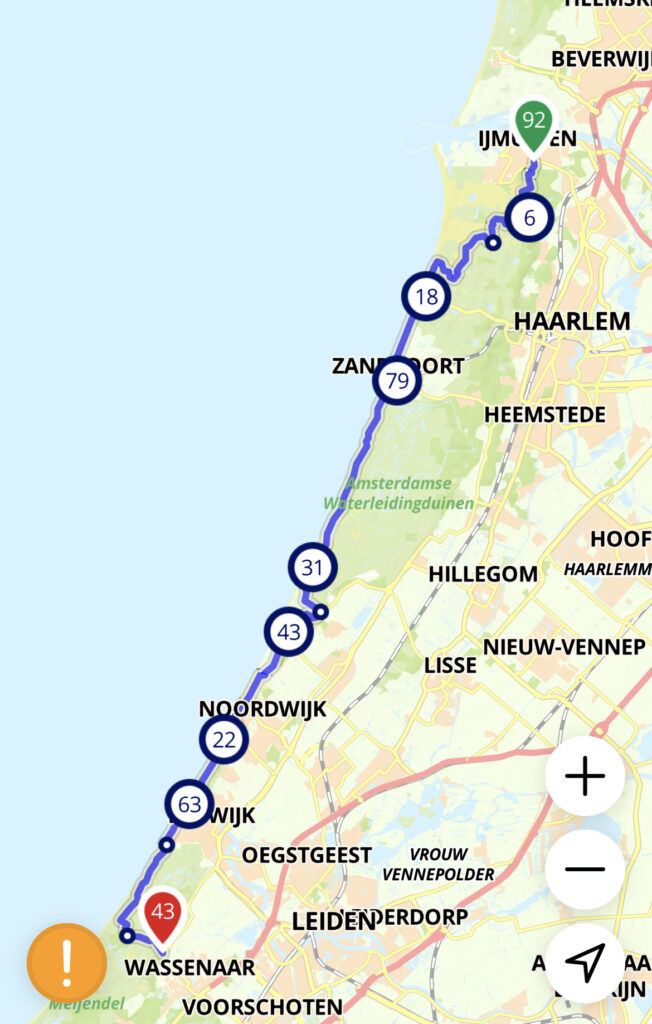
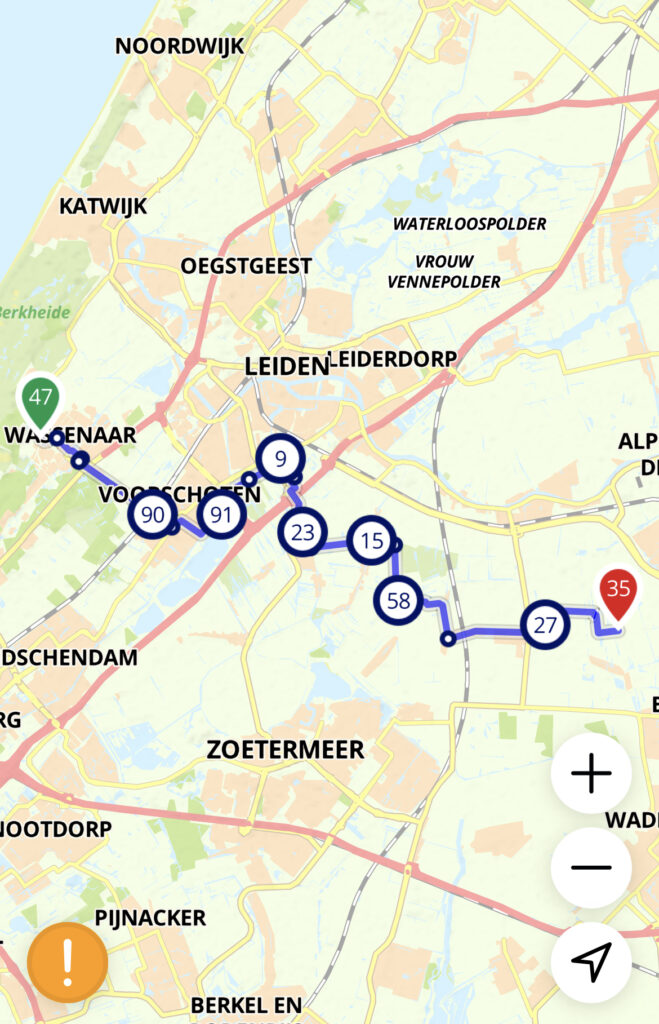
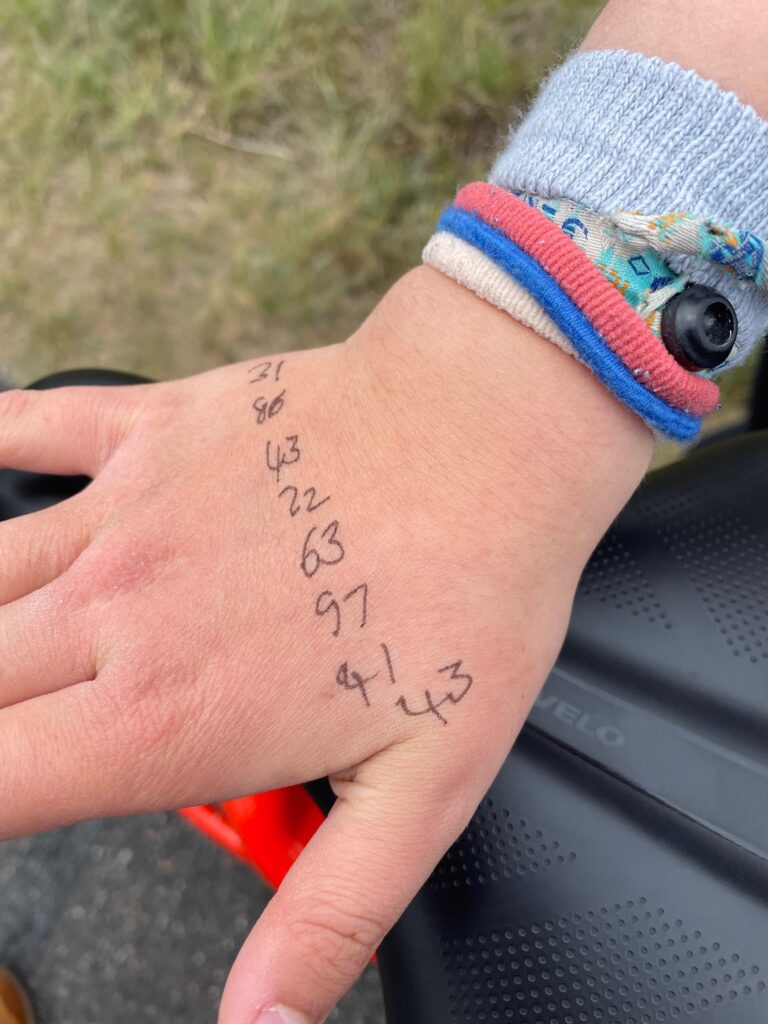
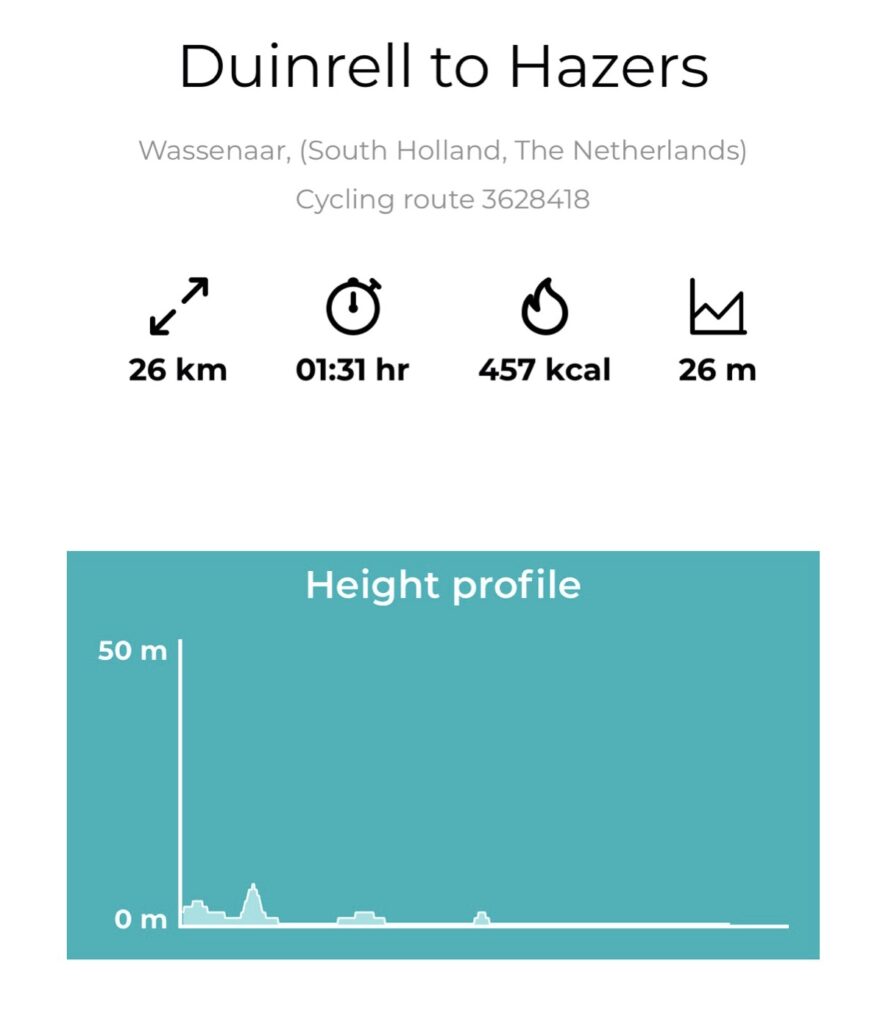
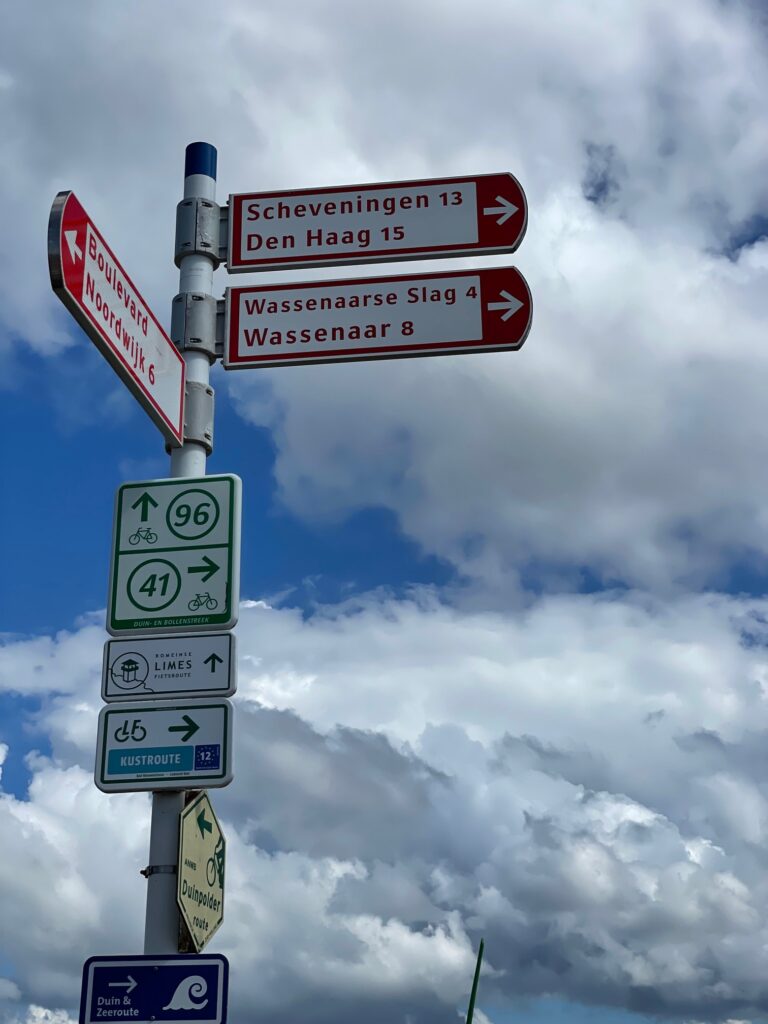
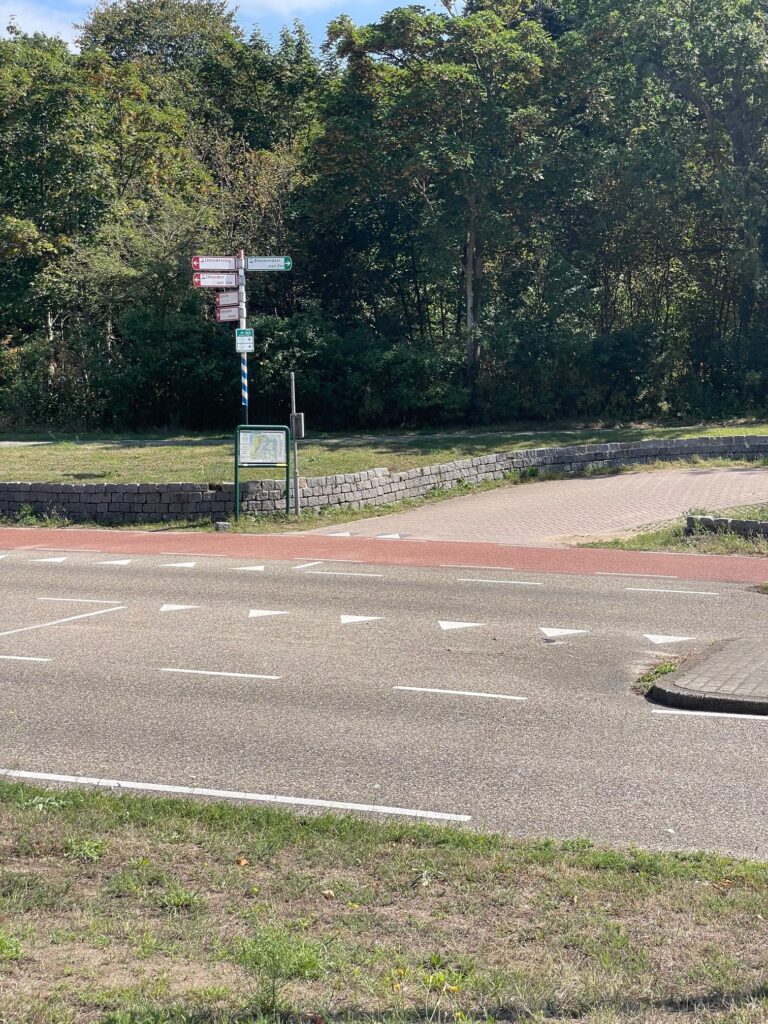
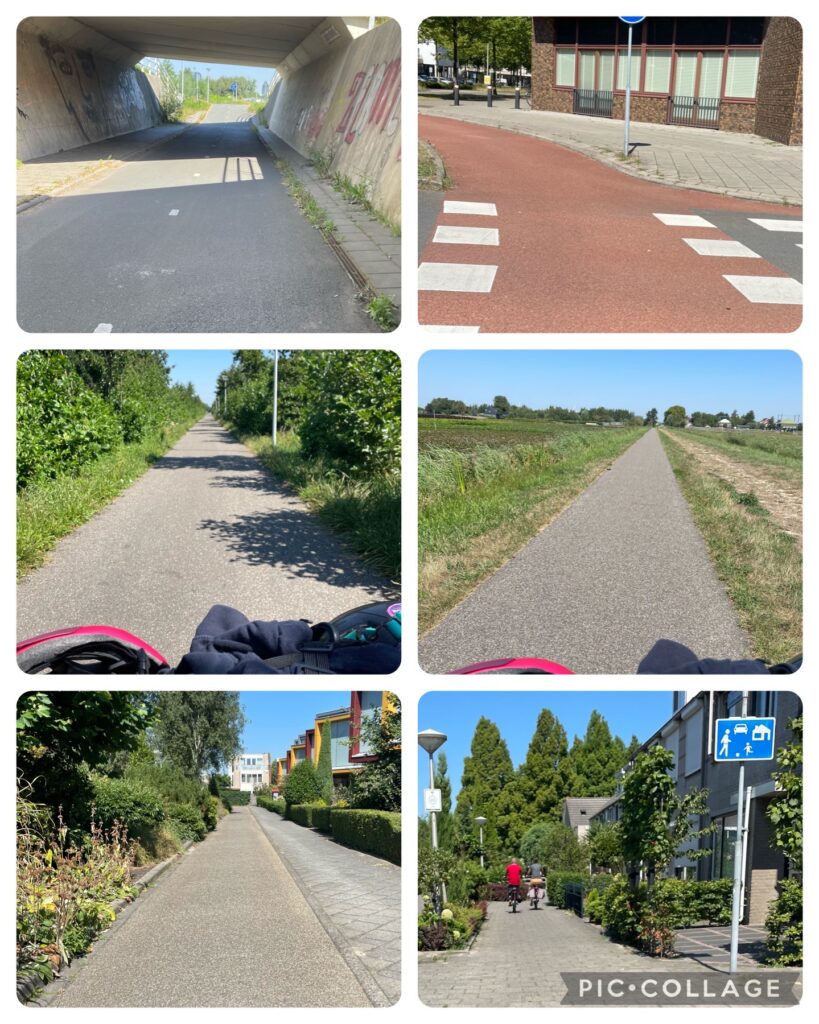
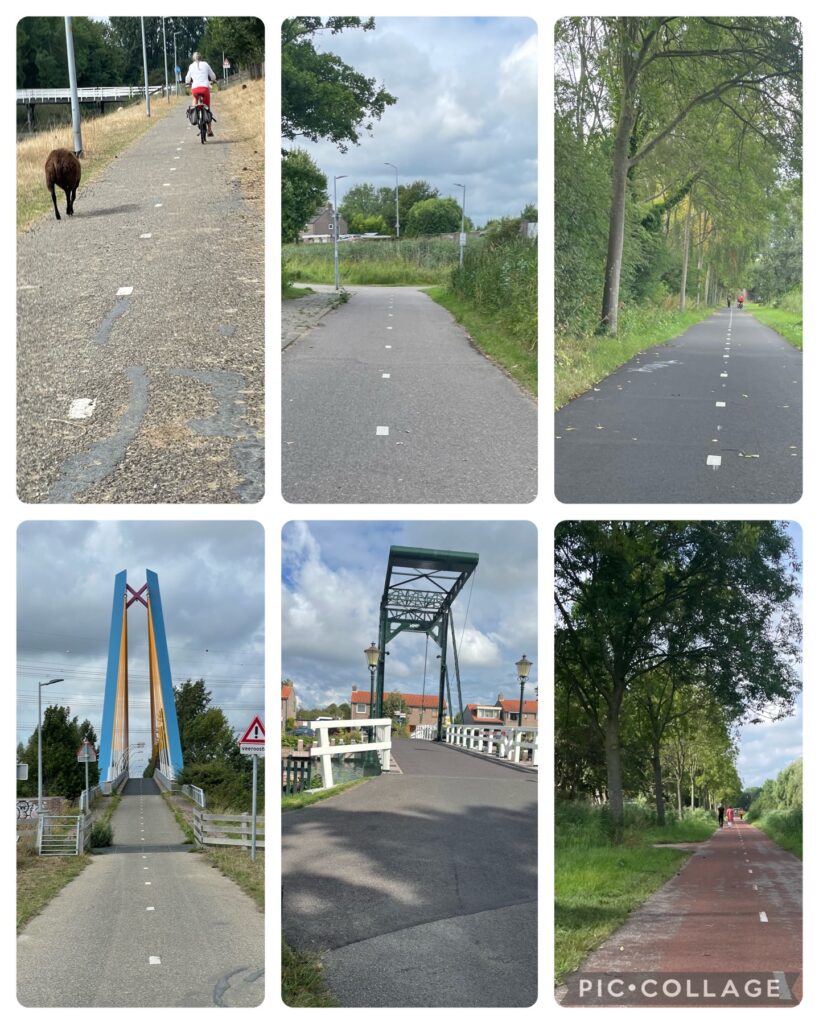
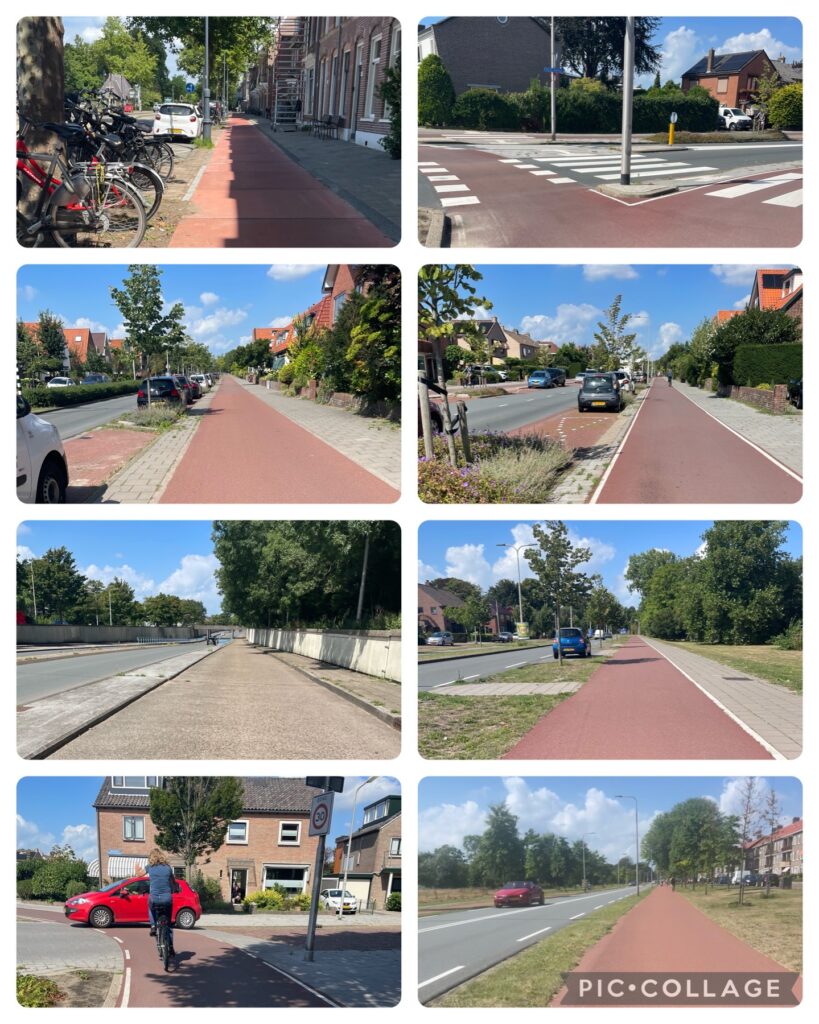
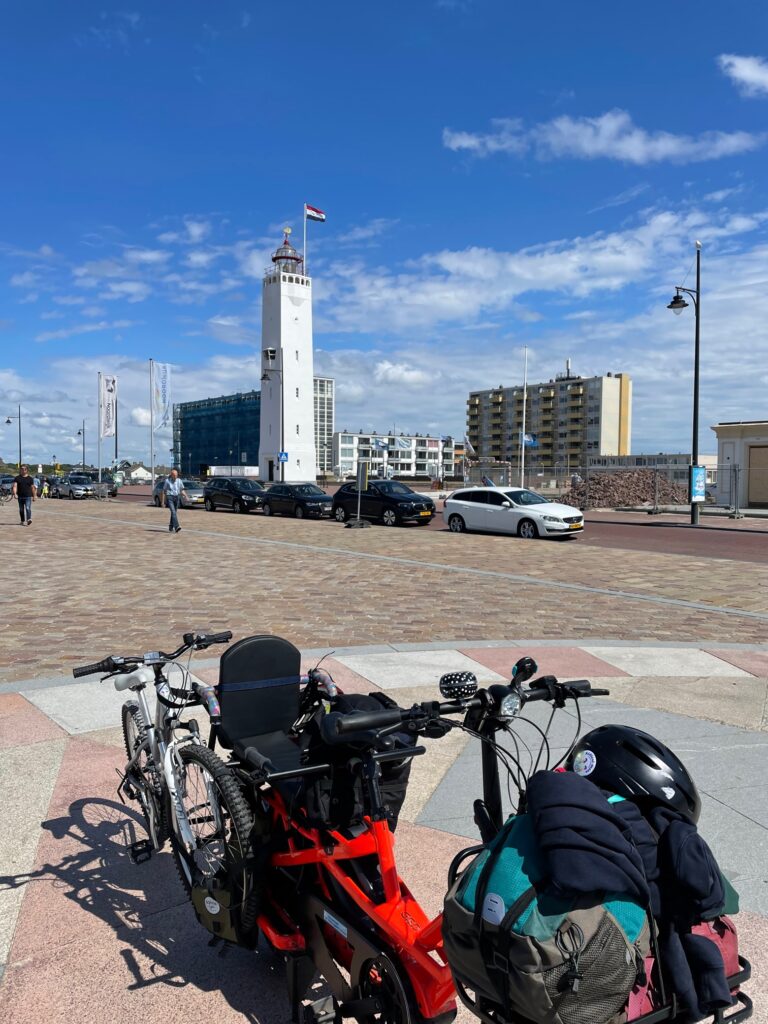
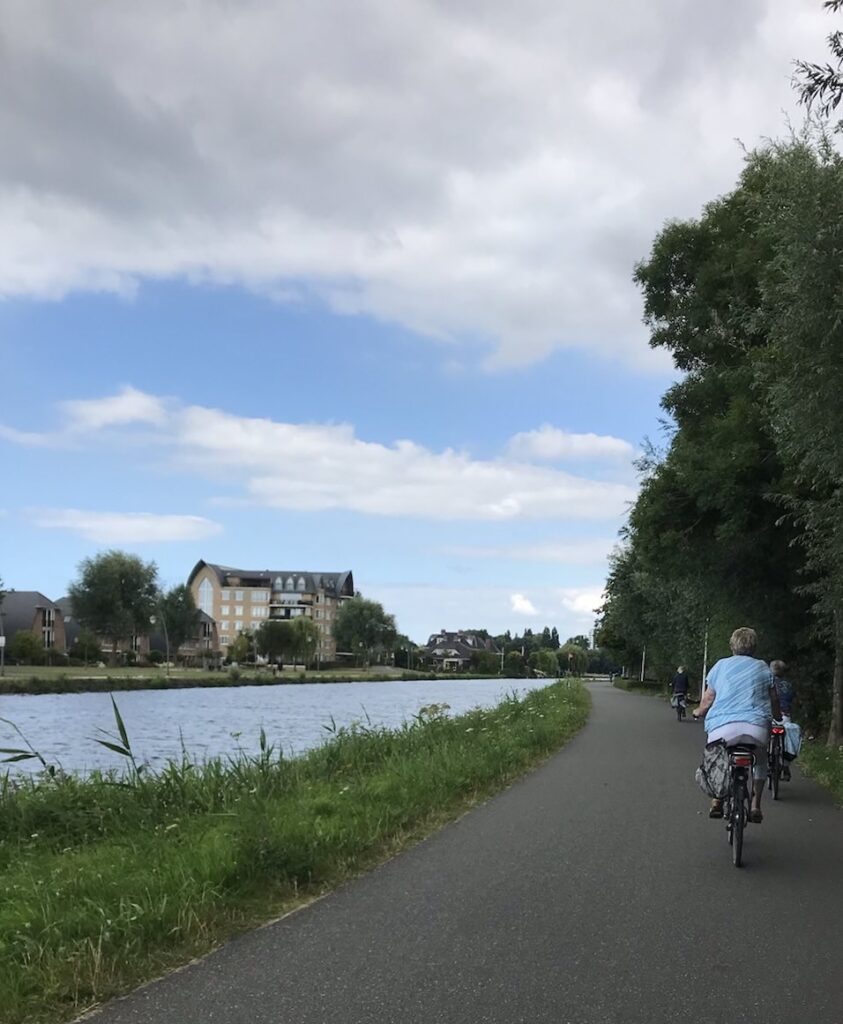
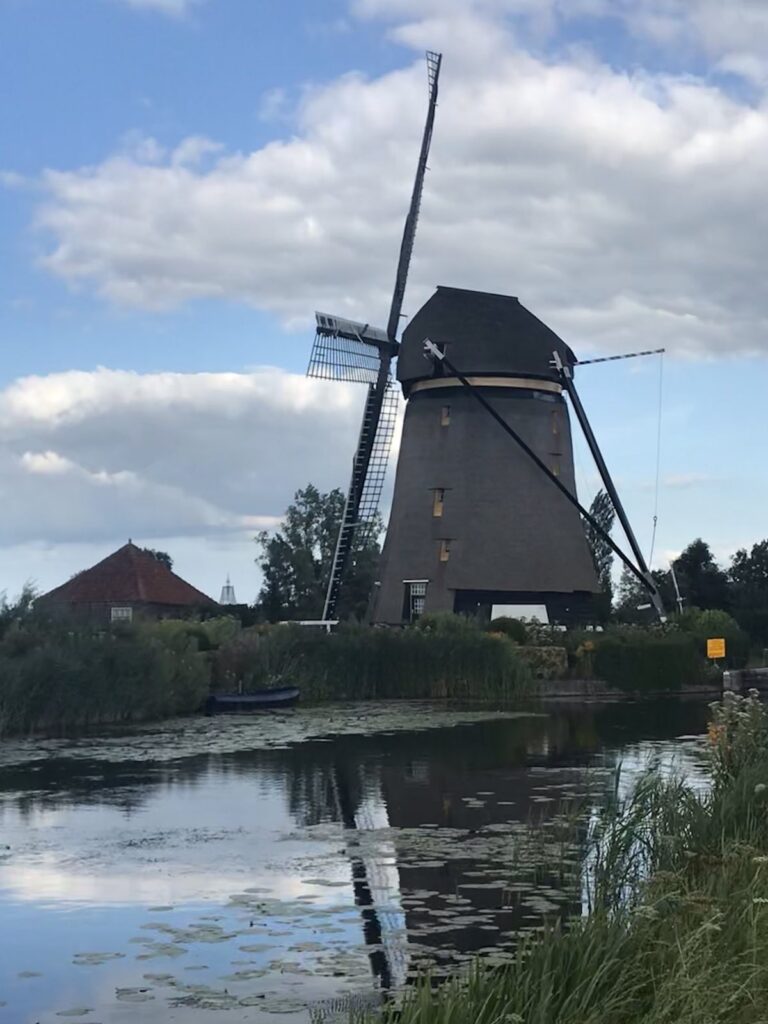
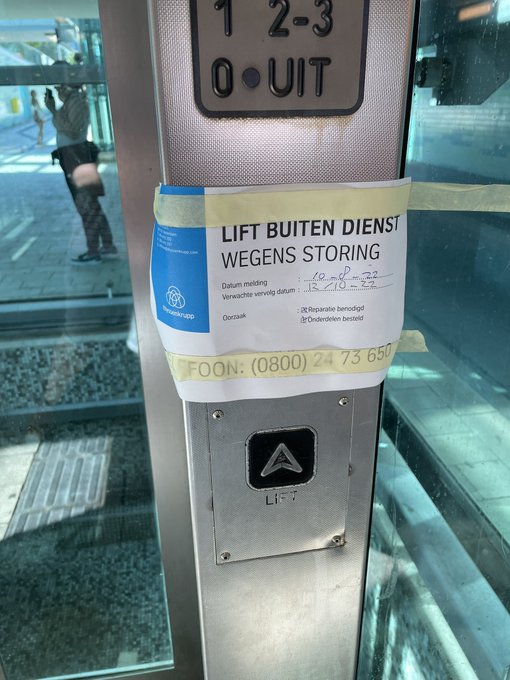
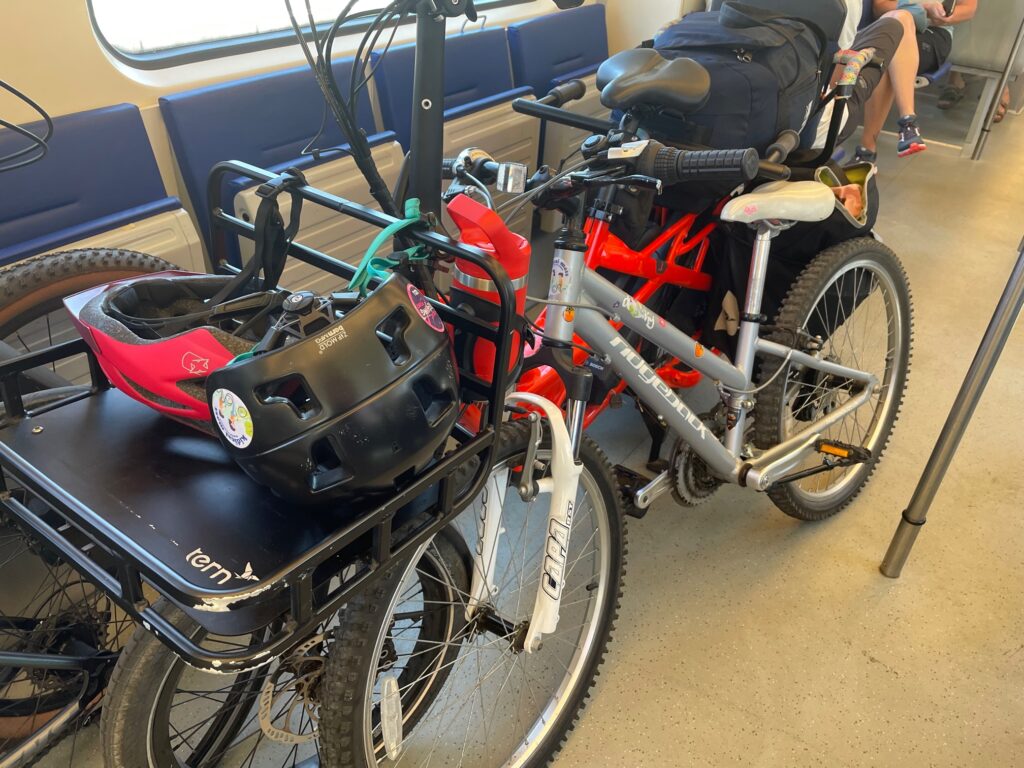
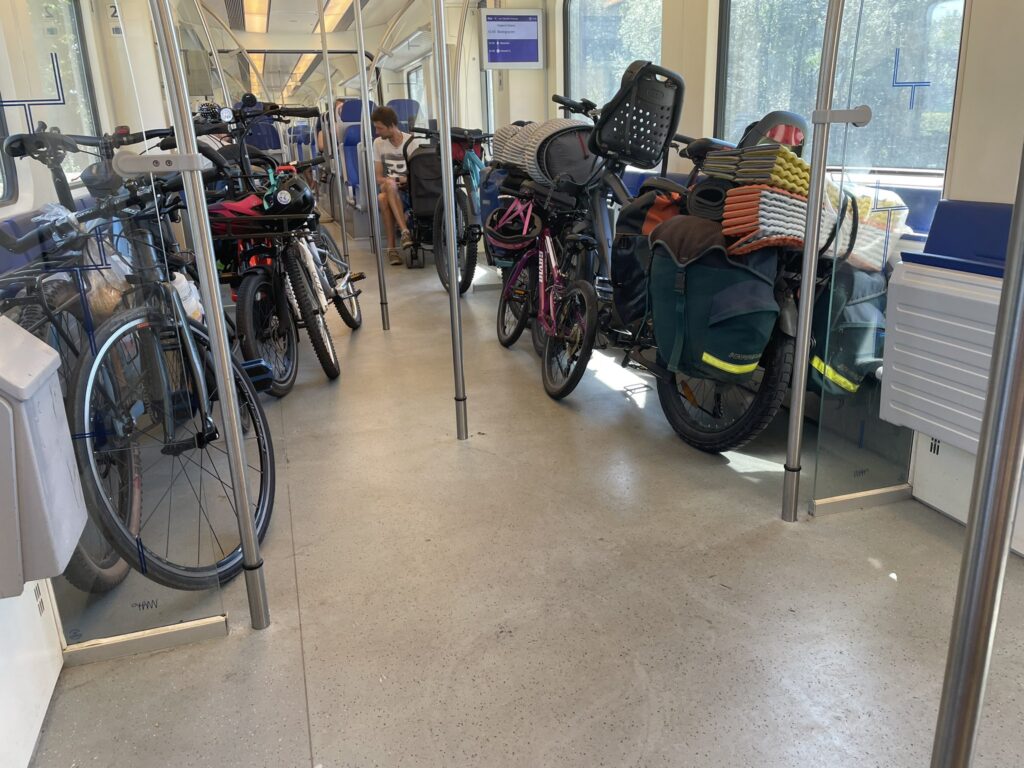
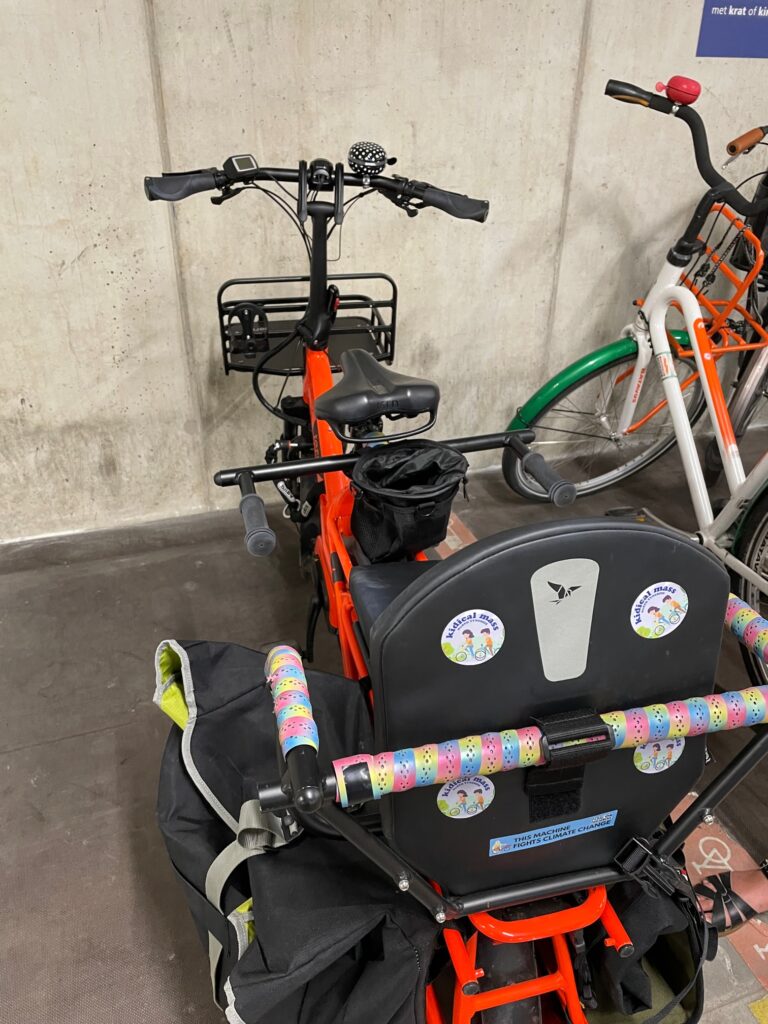
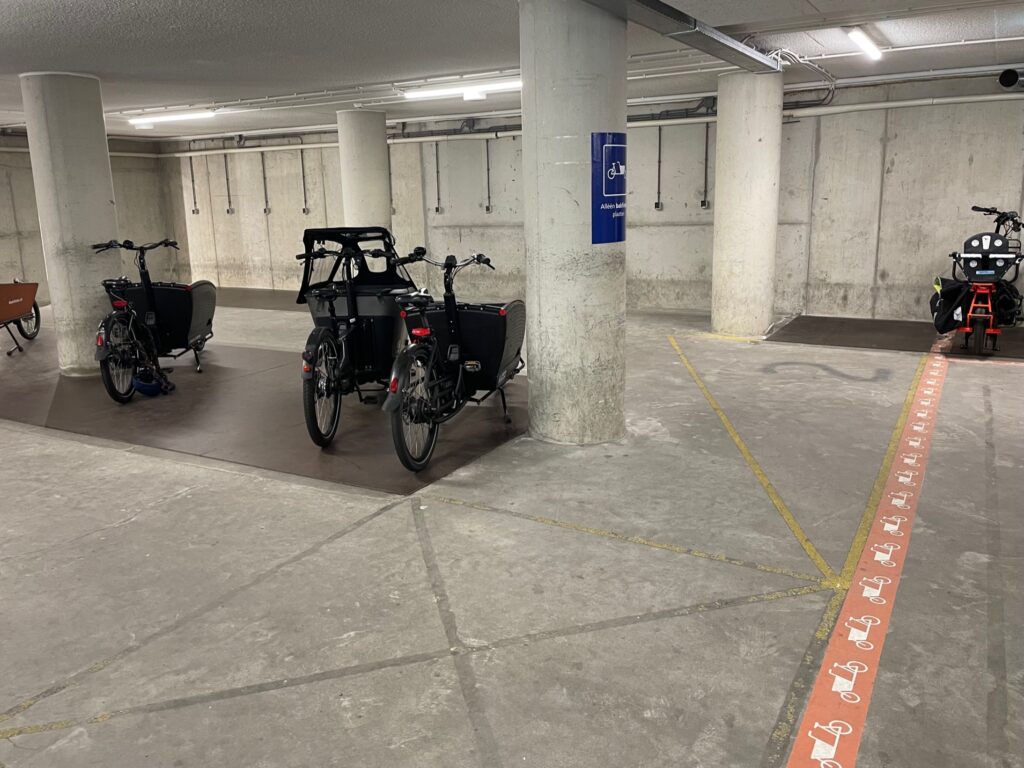
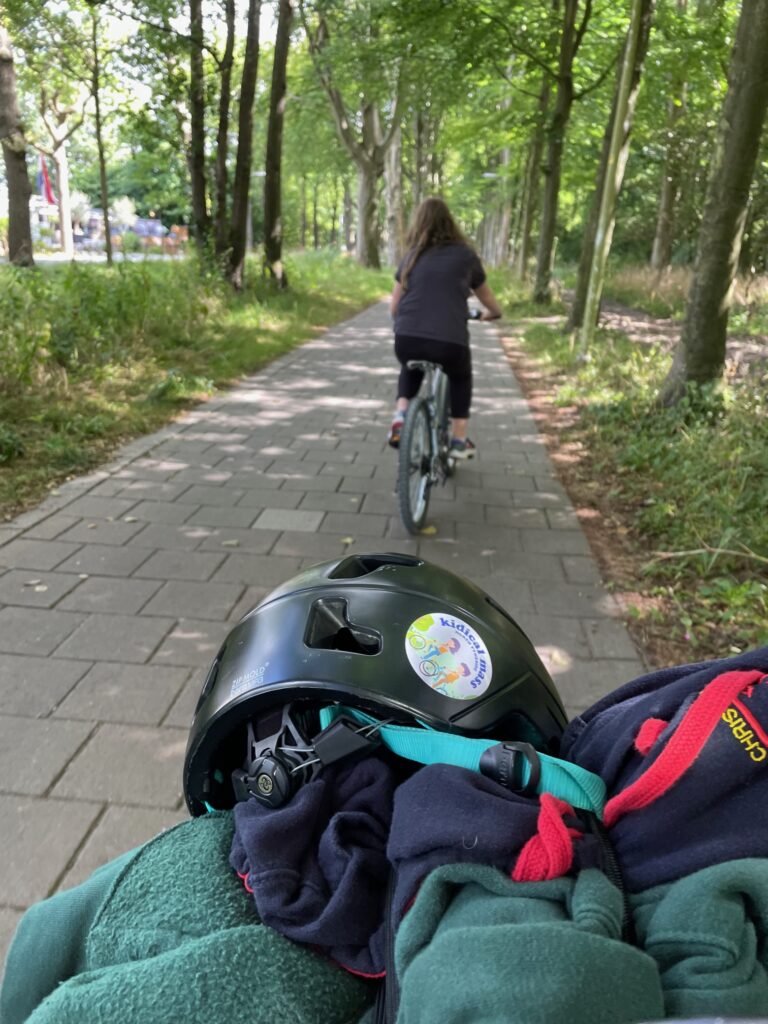
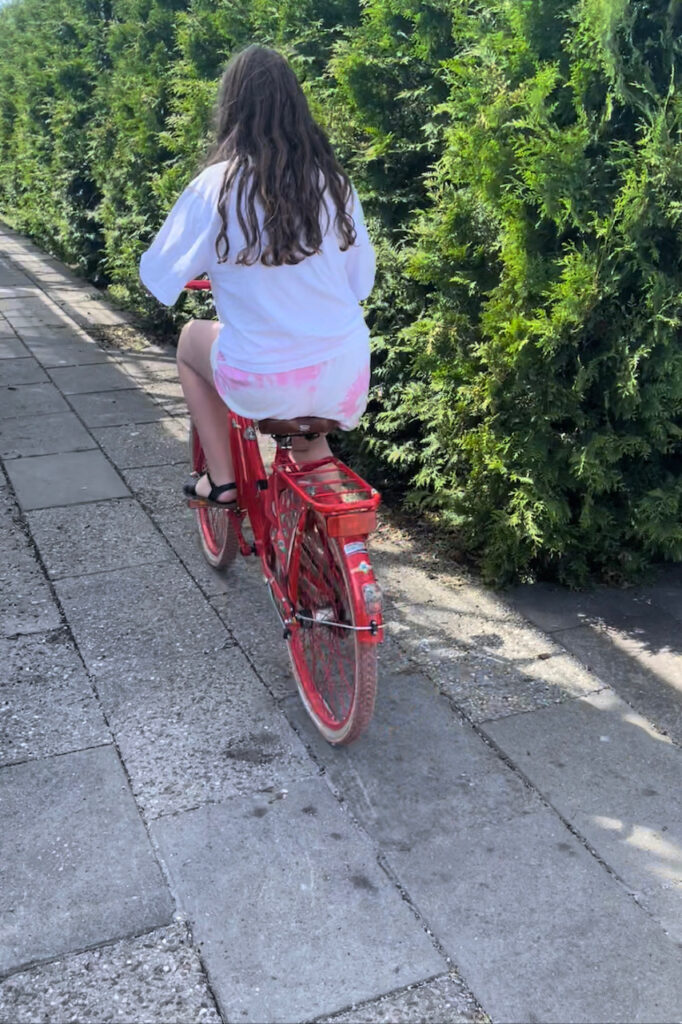
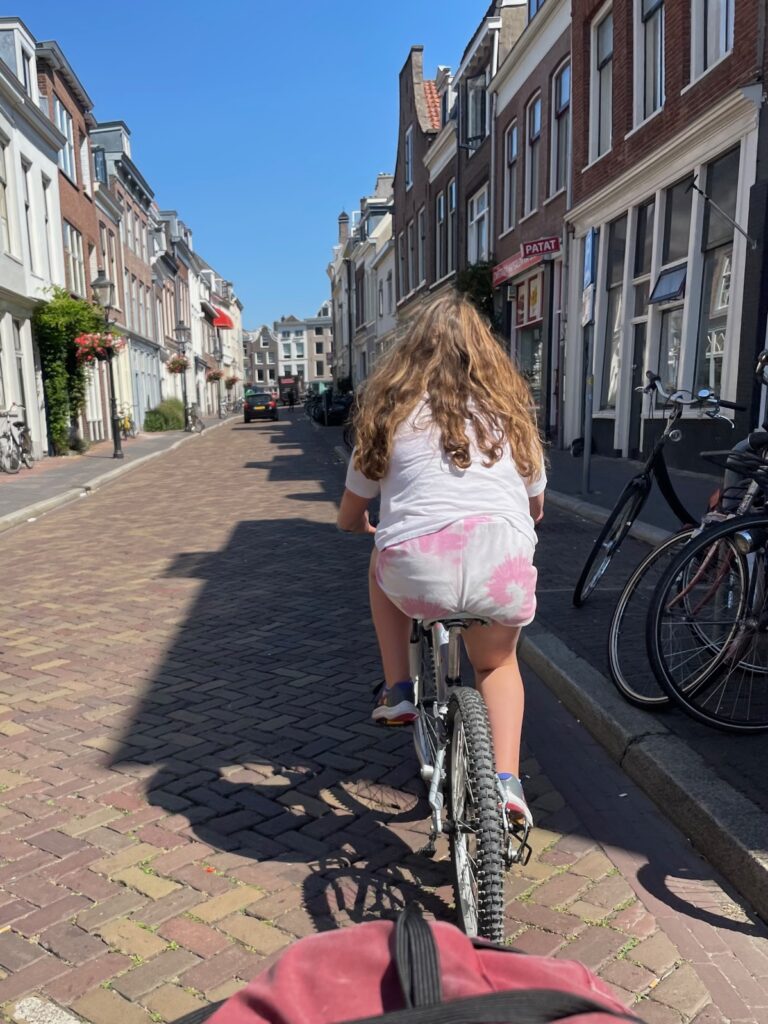
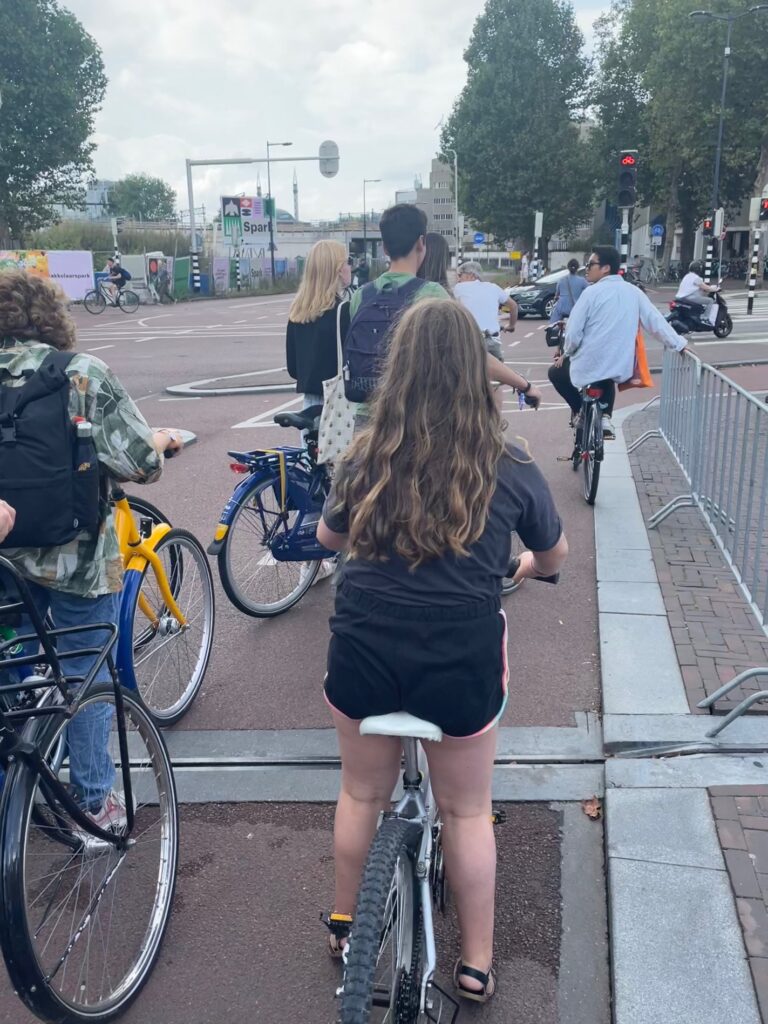
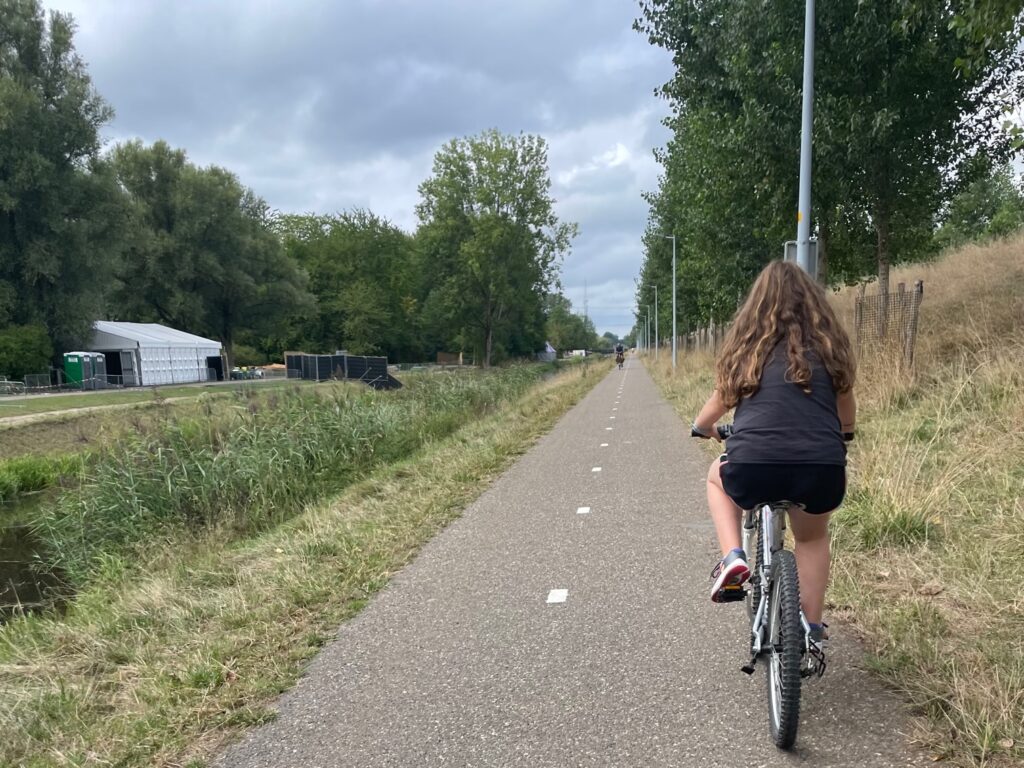
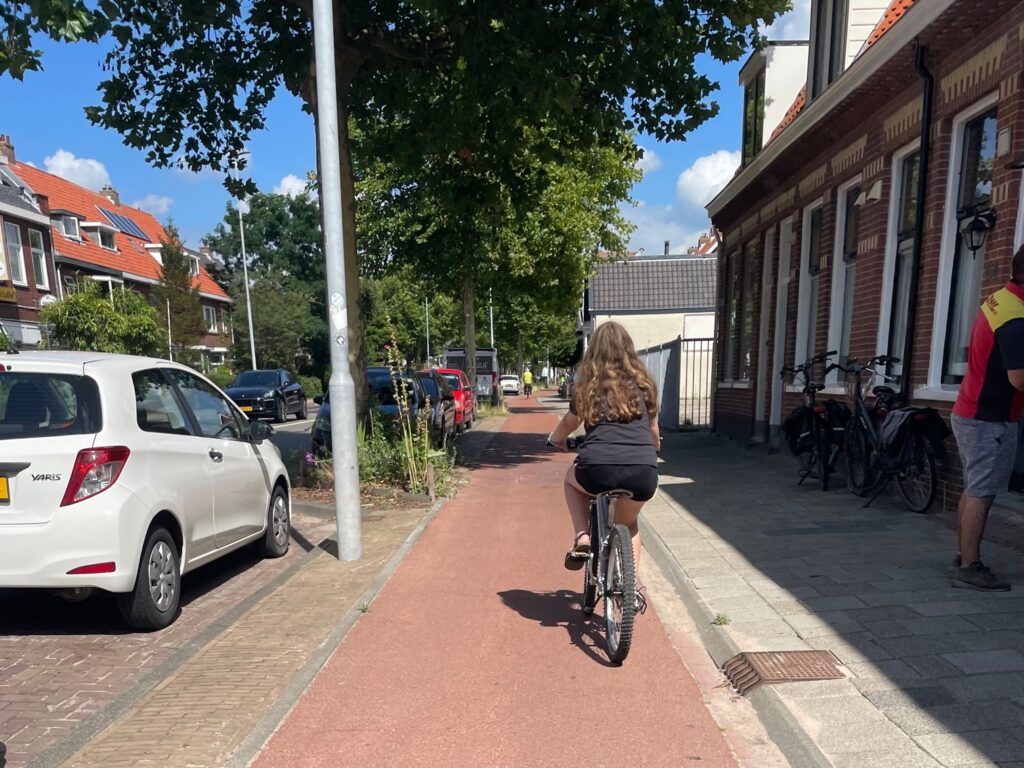
We live in Monkseaton and have considered doing something along these lines, so this is very helpful/inspirational. Glad you both enjoyed your holiday and thanks for sharing!
Great to hear, Tony. I know another family from WB who did it earlier in the summer with a cargo bike and two kids too. Very happy to have my brains picked as and when your plans develop – just message me again here.
Thank you! I have done bits of Belgium and the Netherlands by bike like you (holiday not cycling holiday), but only us two adults. Now there is a child in the mix, your experience is very reassuring. We will take our GSD, too.